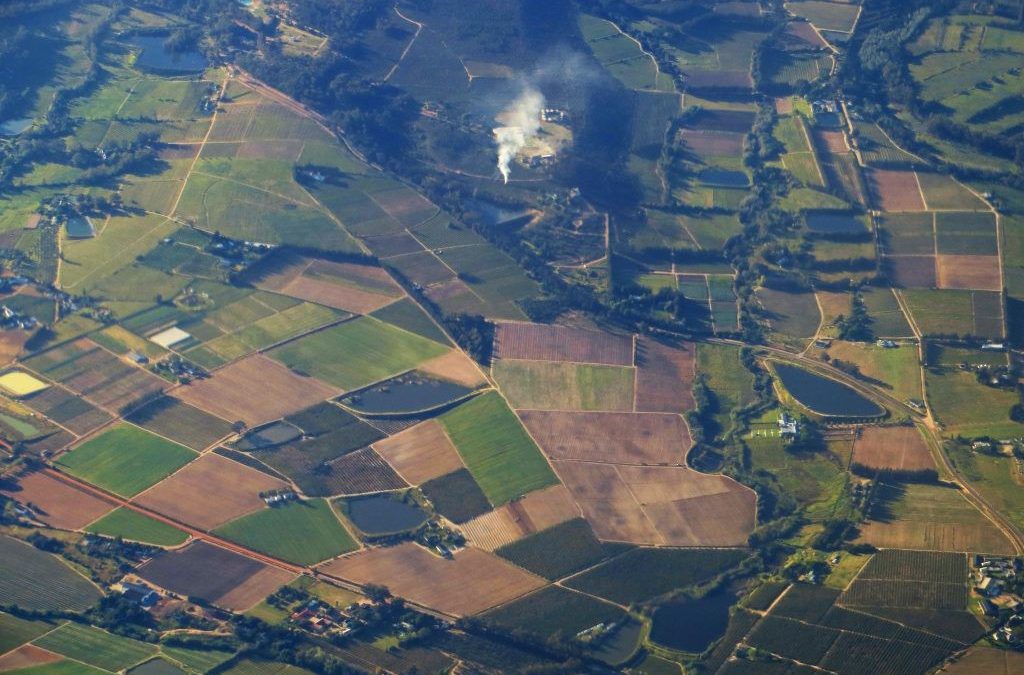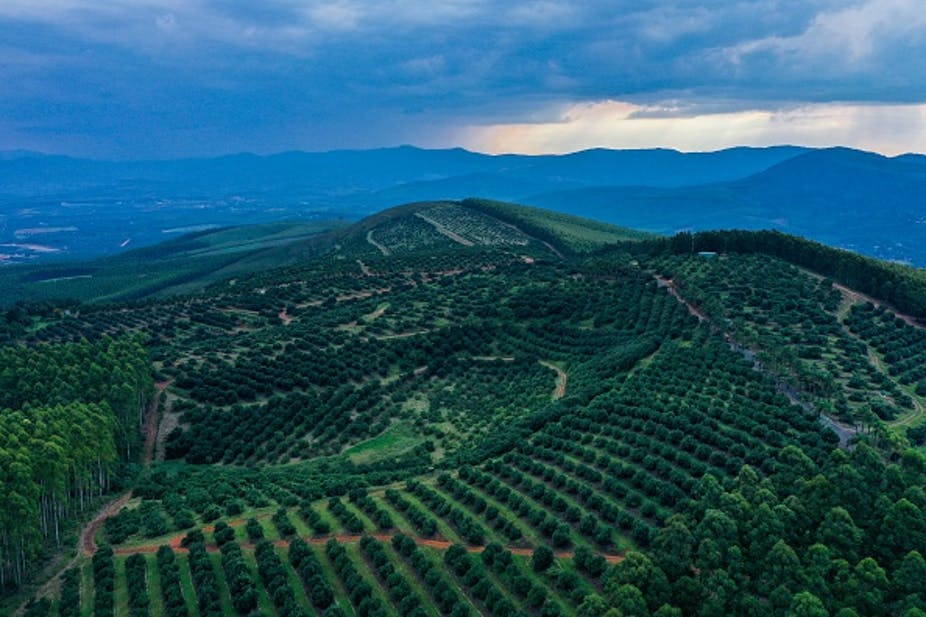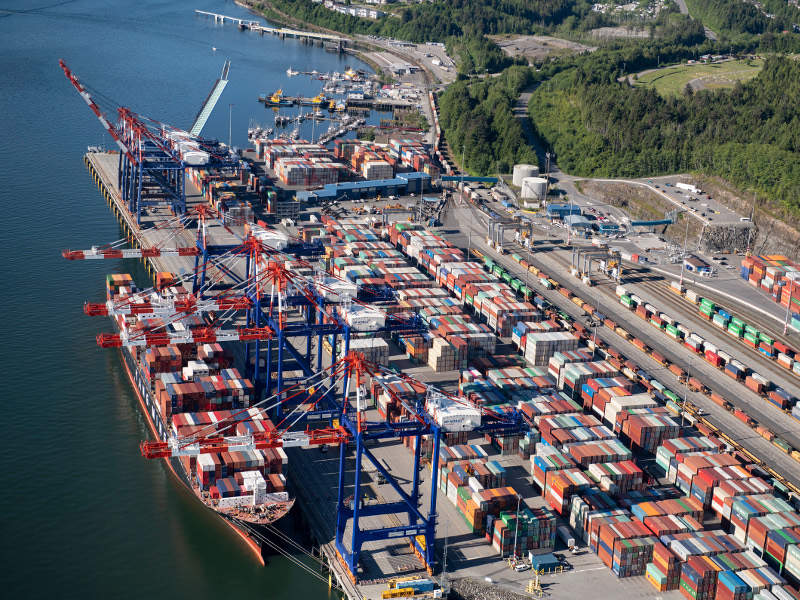
by Wandile Sihlobo | Jun 7, 2021 | Africa Focus
The COVID-19 pandemic has put the global food system under sustained pressure and has triggered various policy responses to manage supply and demand.
I’ve co-authored a paper with Tinashe Kapuya and Gracelin Baskaran exploring this theme from a Sub-Saharan Africa perspective. The article is published by the South African Institute of International Affairs (SAIIA) and accessible by clicking here.
Follow me on Twitter (@WandileSihlobo).

by Wandile Sihlobo | May 25, 2021 | Africa Focus
Maize was South Africa’s fifth-largest exported agricultural product in value terms in 2020. It trailed citrus, grapes, wine and apples, which were the top four products in the overall US$10,2 billion worth of South Africa’s agricultural products exported last year. The total agricultural export earnings in 2020 were the second largest on record in value terms. The export markets were quite diverse, nearly half spread across the African continent, and third, in the European Union and the rest spread across Asia and the Americas regions.
For maize, Zimbabwe was the most dominant export market for South Africa. In the 2,6 million tonnes of maize that South Africa exported within the 2020/21 marketing year, which started in May 2020 and ended in April 2021, about 20% of the volume went to Zimbabwe. This made Zimbabwe the single largest maize export market for South Africa in the 2020/21 marketing year. Other notable export markets were Taiwan, South Korea, Botswana, Vietnam and Japan, amongst others.
It is this significance of Zimbabwe as a market for South Africa’s maize exports that makes last week’s announcement by Zimbabwean authorities to suspend all maize and maize meal imports with immediate effect consequential. This suspension of imports comes as the country approaches its maize harvest period. According to data from the United States Department of Agriculture (USDA), the domestic crop could reach 2,7 million tonnes, the largest harvest since 1984. The views from local analysts generally concur with the USDA’s forecast that Zimbabwe is likely to have good maize and a strong overall agricultural season. The expected large maize output is primarily supported by the expansion in the area planted, coupled with favourable rainfall since the start of the season. Importantly, Zimbabwe will have the largest maize surplus in nearly three decades, as its annual maize consumption is between 1,8 and 2,0 million tonnes, against the aforementioned crop of 2,7 million tonnes.
South Africa, which benefited from the Zimbabwean maize demand in the recent past, could have 2,8 million tonnes of maize surplus available for export markets. This would be the largest volume since 1994/95, when South Africa exported 4,7 million tonnes of maize, according to data from the South African Grain Information Services (SAGIS). These available maize export volumes are on the back of a large forecast harvest, which we at Agbiz currently forecast to be 16,7 million tonnes. This would be the second-largest maize harvest on record. With Zimbabwe as a potential export market out of the picture, and various regional maize producing and consuming countries in the Southern Africa region, such as Malawi, Zambia, Tanzania, and Mozambique, expecting large harvests, regional demand for maize will be weaker than usual. The consistent markets that South Africa will likely have are the Far East markets, including Taiwan, South Korea, and Japan.
You can read the full article by clicking here (paywall). The article was written for and first published on Fin24
Follow me on Twitter (@WandileSihlobo). E-mail: wandile@agbiz.co.za

by Wandile Sihlobo | May 6, 2021 | Africa Focus
I have a new piece on The Conversation focusing on Sub-Saharan Africa’s food security conditions amid the Covid-19 pandemic. You can read the essay by clicking here (no paywall).
Follow me on Twitter (@WandileSihlobo). E-mail: wandile@agbiz.co.za

by Wandile Sihlobo | Apr 22, 2021 | Africa Focus
The favourable agricultural season for most African countries has not reached the corners of Kenya sufficiently. Kenya is one of the few African countries that will likely remain significant maize importers in the 2021/22 marketing year. Several countries such as Malawi, Tanzania, Zambia, Zimbabwe, Mozambique, and Ethiopia expect a large domestic harvest, which should reduce the import needs compared to the previous season and place some at the net exporting position.
A report released by the United States Department of Agriculture (USDA) on April 12, 2021, indicates that Kenya’s 2020/21 maize production would likely increase marginally from the previous season to 4,0 million tonnes (this production year corresponds with the 2021/22 marketing year). Such a harvest falls short of Kenya’s annual maize consumption of 4,5 million tonnes. Hence, imports are set to increase by 25% y/y to about 500 000 tonnes. This will primarily be white maize, which exporting countries such as South Africa will have in abundance for the 2021/22 marketing year.
Nevertheless, South Africa will not play a meaningful role in Kenya’s maize market despite the expected supplies of white maize for export markets of 1,2 million tonnes in 2021/22. This is part of the expected total available maize supplies for exports of 2,8 million tonnes, with 1,6 million tonnes being yellow maize, which will likely be exported to Japan, South Korea and Taiwan.
Kenya still prohibits the importation and growing of genetically modified maize. This is a significant hindrance for South Africa as roughly 80% of maize grown in the country is genetically modified.
South Africa’s maize export market will remain the domestic, neighbouring countries and the Far East market – mainly Japan, South Korea, and Taiwan. However, the neighbouring countries’ maize imports demand will likely soften notably in the likes of Zimbabwe because of large domestic harvests and growing competition from Zambia.
To illustrate the improvement in domestic maize production in a few African countries this year, consider these estimates from the USDA; Zambia’s 2020/21 maize production could reach 3,4 million tonnes (up 69% y/y). In comparison, Malawi’s maize harvest is estimated at 3,8 million tonnes (up 25% y/y), Mozambique’s maize crop is estimated at 2,1 million tonnes (up 8% y/y), Kenya’s maize is forecast at 4,0 million tonnes (up 5% y/y). Tanzania’s maize harvest is estimated at 6,3 million tonnes (up 8% y/y).
Given these available maize supplies for various African countries, Kenya will receive maize for the 2021/22 marketing year maize from the Common Market for Eastern and Southern Africa (COMESA) and East African Community (EAC). The primary incentive will not be so much a price decision. Rather a regulatory matter as the regions mentioned above produce non-genetically modified maize (an opposite of the South Africa situation). Importantly, Zambia and Tanzania will likely dominate Kenya’s maize import list, as has been the case over the past decade.
In sum, the talk of growing maize import needs in Kenya will be of little value to the South African maize exporters. However, there will be ample supplies on the back of an expected second-largest maize harvest on a record of 16,7 million tonnes. The ban on importing genetically modified crops remains a significant barrier for South African maize exporters to Kenya and several African countries. Only Zimbabwe has recently reversed this ban and opened a way for maize trade between the two countries. Such regulatory barriers are an example of issues that will likely persist regarding agricultural commodities, irrespective of the countries uniting under the African Continental Free Trade Area.
South African maize exporters should focus on the Far East markets, especially in the 2021/22 marketing year where available maize for exports could amount to 2,8 million tonnes, the largest volume since 1994/95. The African continent will not be a favourable maize export market for now.
The article was written for and first published on Fin24.
Follow me on Twitter (@WandileSihlobo). E-mail: wandile@agbiz.co.za

by Wandile Sihlobo | Apr 9, 2021 | Africa Focus
I recently joined Ms Vonnie Estes, Vice President of Technology, at The Produce Marketing Association to discuss the role of technology in boosting agriculture productivity in Africa and how growing more agricultural produce can help address unemployment on the Continent.
You could listen to our conversation by clicking here.
This conversation is available on all podcast platforms.
Follow me on Twitter (@WandileSihlobo). E-mail: wandile@agbiz.co.za

by Wandile Sihlobo | Mar 14, 2021 | Africa Focus
Over the past two decades, South Africa’s agricultural output growth and rise in trade surpluses have been inspiring, and these successes give me much enthusiasm and optimism. In 2020 alone, amidst a pandemic, South Africa exported US$10,2 billion worth of agricultural products, the second largest on record. One market that has consistently been important to South Africa is the African continent, which on average, accounts for 40% of South Africa’s agricultural exports.
These deepening continental trade relations give me confidence that the African Free Continental Trade Area should be favourable for South Africa’s agriculture. The export domination that South Africa has had over the past couple of decades has mostly been concentrated within the SADC region, a free-trade area comprised of 16 countries, for decades. South Africa will now progressively have access to the broader continental markets at relatively lower tariffs.
In an article I co-authored with agricultural economists Tshepo Morokong and Louw Pienaar on Econ3x3 last month, we analysed the essential agricultural products that the African continent mainly imports. These included grains, animal and vegetable fats, sugar, dairy, beverages, prepared food, cotton, fish, and meat. South Africa is already an exporter of some of these products to the continent and it should increase the volumes in the coming years as logistics and administrative procedures become well established. We argue that such a conducive environment will only manifest when African countries “Harmonise trading systems and promote inter-continental trade through the elimination of tariffs and other non-tariff barriers, which will stimulate the investment needed to aid smooth trading on the continent.”
But the success story needs to be mutually beneficial. South Africa is also a significant importer of agricultural products. In 2020, the country spent US$5,9 billion on imports of agricultural products. The top agricultural products South Africa typically imports are rice, wheat, palm oil, poultry meat, sunflower oil, beer from malt, soybean oil and chocolate, amongst other products. Thailand, Brazil, China, Argentina, Indonesia, India, the Netherlands and the US are amongst the countries supplying these products to South Africa.
Yet, there is significant scope to import some of these products from African countries. An analysis of productivity potential across 44 sub-Saharan African countries showed that nine countries make up 60% of the total potential, with three countries—Ethiopia, Nigeria, and Tanzania—accounting for half of it.
Some African countries are trying to aggregate smallholder-farmer activity to achieve economies of scale. This includes efforts include farmer aggregation through cooperatives, such as the Githunguri Dairy in Kenya, which serves approximately 40,000 farmers in East Africa and “outgrower schemes,” such as for barley in beer production in Ethiopia.
For countries in Africa to benefit from the continental agreement, they must increase their productivity at the local level.
The predicament of low crop yields still maintains in many African countries, and on average, yields are four to five times lower than what you find in South African commercial farms. This is not caused by variations in climate, rather by policy challenges and levels of investment. I wrote in The Conversation in 2020 about the need for governments to extend land rights and be open to biotechnology that could boost output, as has been the case in South Africa.
It is quite encouraging that we are now seeing encouraging steps, albeit, still limited to the adoption of mechanical technology. A recent article by agricultural economist Tinashe Kapuya, in the Farmers Weekly magazine, outlines the Ethiopian government’s efforts to “exempt import levies and charges on specific agriculture inputs, which had an immediate impact on lowering the cost of equipment purchased by agribusinesses and farmers. ” In Ghana, we also see reforms in seed and fertiliser policies, which have increased private sector involvement and prospects of investment in higher-yielding varieties.
Such interventions should boost Africa’s agricultural output and ensure that the African Free Continental Trade Area is beneficial for many countries that will have products to trade. These potential benefits can drive economic empowerment as the agricultural sector is the mainstay of the economies.
This essay first appeared on Business Day, March 09, 2021
Follow me on Twitter (@WandileSihlobo).

by Wandile Sihlobo | Feb 27, 2021 | Africa Focus
Global grain market players and analysts depend on major organisations such as the International Grains Council and the US department of agriculture for production estimates.
However, these organisations could have an incorrect view of Zimbabwe’s 2020/2021 grain production this time around. Both organisations forecast 908,000 tonnes, 17% higher than the previous season, which is still well below Zimbabwe’s annual requirement of 1.8-million to 2-million tonnes. If correct, this would mean the country remains a net importer of maize until 2022.
However, the word from analysts on the ground, and official government production estimates, are far more bullish. On February 18 state-run newspaper The Herald noted that “this year’s maize harvest is expected to surpass the 1.8-million tonnes recorded in the 2016/2017 season”.
Admittedly, the government’s agricultural estimates have a history of being more optimistic than market conditions warrant. Nevertheless, a cautiously optimistic view of Zimbabwe’s 2020/2021 maize production and other agricultural activities is shared by the World Food Programme (WFP).
In its report of February 16, the WFP indicated that “Zimbabwe’s crop area planted could be higher when compared to last season … crop conditions are reported to be largely good in most parts of the country, with the maize crop reported to be at its early to the late vegetative stage with the harvest likely to start in April”.
Within a few days of the heavy rainfall brought by Cyclone Eloise to the Southern Africa region, I wrote a post in my blog asking questions about Zimbabwe’s 2020/2021 maize production prospects. The feedback from various analysts on the ground also made it clear that the conditions were far different from global organisations’ estimates. Perhaps, in the revisions, which will be out later in February in the International Grains Council’s case and in early March from the US department of agriculture, the picture will be more in line with what domestic players are reporting.
Cyclone Eloise brought heavy rains mainly in the Masvingo, Manicaland and Matabeleland provinces covering Zimbabwe’s southeastern parts. These provinces are not the major maize producers. These are primarily the central to northern regions, including the Midlands and Mashonaland provinces (west, east and central).
If Zimbabwe’s maize production surpasses 1.8-million tonnes as the government and local analysts expect, Zimbabwe could be nearly self-sufficient in the 2021/2022 marketing year. Notably, the improvement will probably be across all agricultural activities, not only maize. This is essential for household food security, and maize imports could fall notably from the 2020/2021 marketing year level, which I estimate will be nearly 1-million tonnes to meet annual needs.
If that is the case there will be implications for SA’s maize market. Thus far one of the main drivers of prices in the 2020/2021 marketing year has been growing regional demand, primarily from Zimbabwe. If this demand is curtailed there will be less pressure on SA’s maize supplies, which could lead to a softening of domestic maize prices, which ultimately bodes well for food price inflation.
These developments come at a time when available data — planting estimates and crop condition reports — suggest SA could have its second-largest maize harvest on record, at about 16.7-million tonnes (from 15.4-million tonnes in 2019/2020). On February 25 the crop estimates committee will release its first production estimate, which might confirm this optimism.
In sum, the 2020/2021 production season has so far been favourable, not just for SA but for most of Southern Africa, including Zimbabwe.
This essay first appeared on Business Day, February 23, 2021
Follow me on Twitter (@WandileSihlobo).

by Wandile Sihlobo | Feb 16, 2021 | Africa Focus
Abstract
“The new African Free Continental Trade Area phases out 90% of tariffs on all goods traded between African Union member states over a 5-to-10-year period. This seeks to boost intra-African trade and investment in regional value chains. The current 41% share of SA agricultural exports that goes to Africa is concentrated in SADC. The opening of other markets presents an opportunity for further expansion in goods such as oranges, apples and wine.”
The above text is an abstract of an article I’ve co-authored with fellow agricultural economists Louw Pienaar and Tshepo Morokong of the Western Cape Department of Agriculture, just published on Econ 3×3.
You can read the article by clicking here.
Cover photo: Business Day/PRASIT RODPHAN
Follow me on Twitter (@WandileSihlobo).









